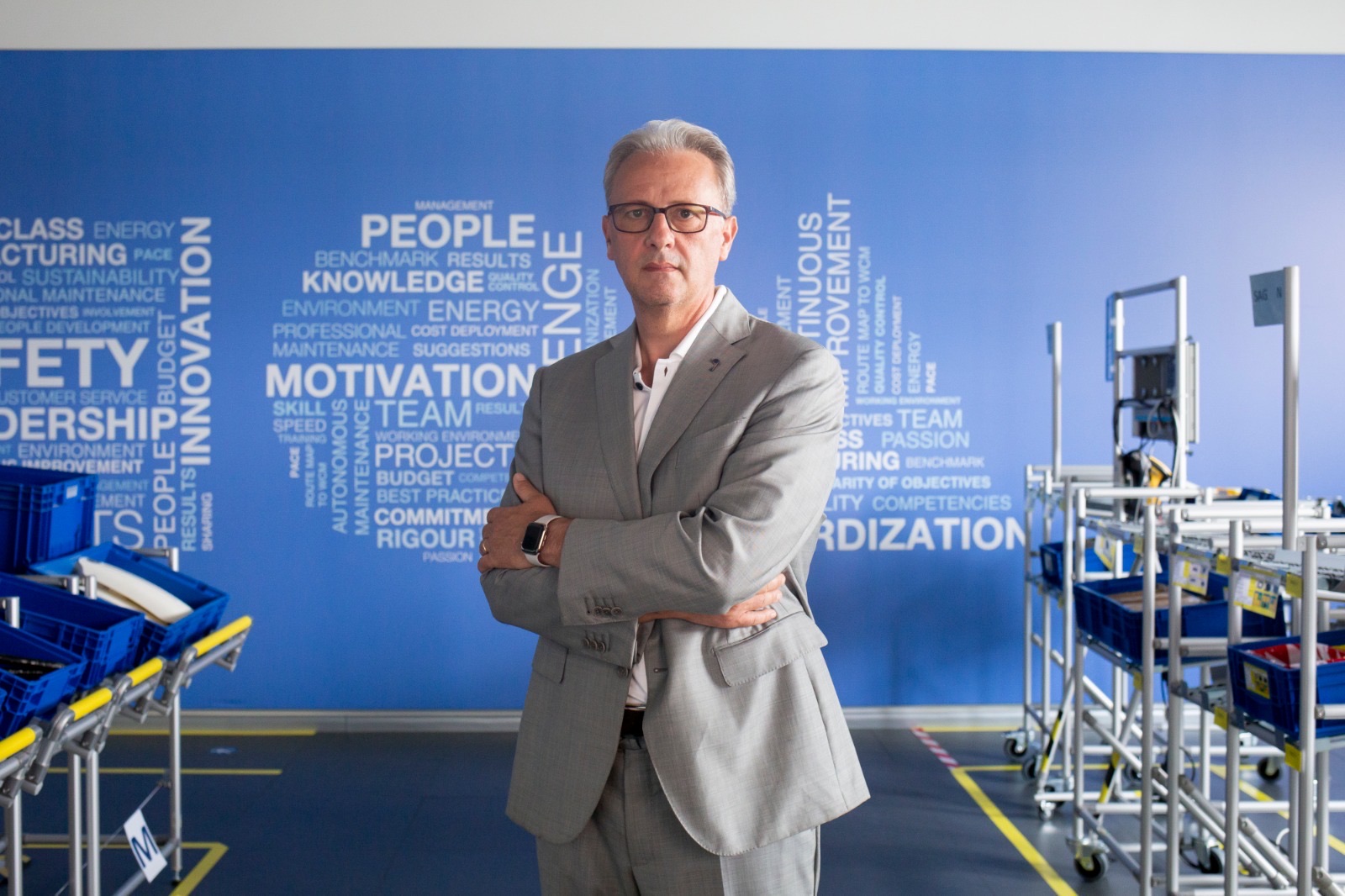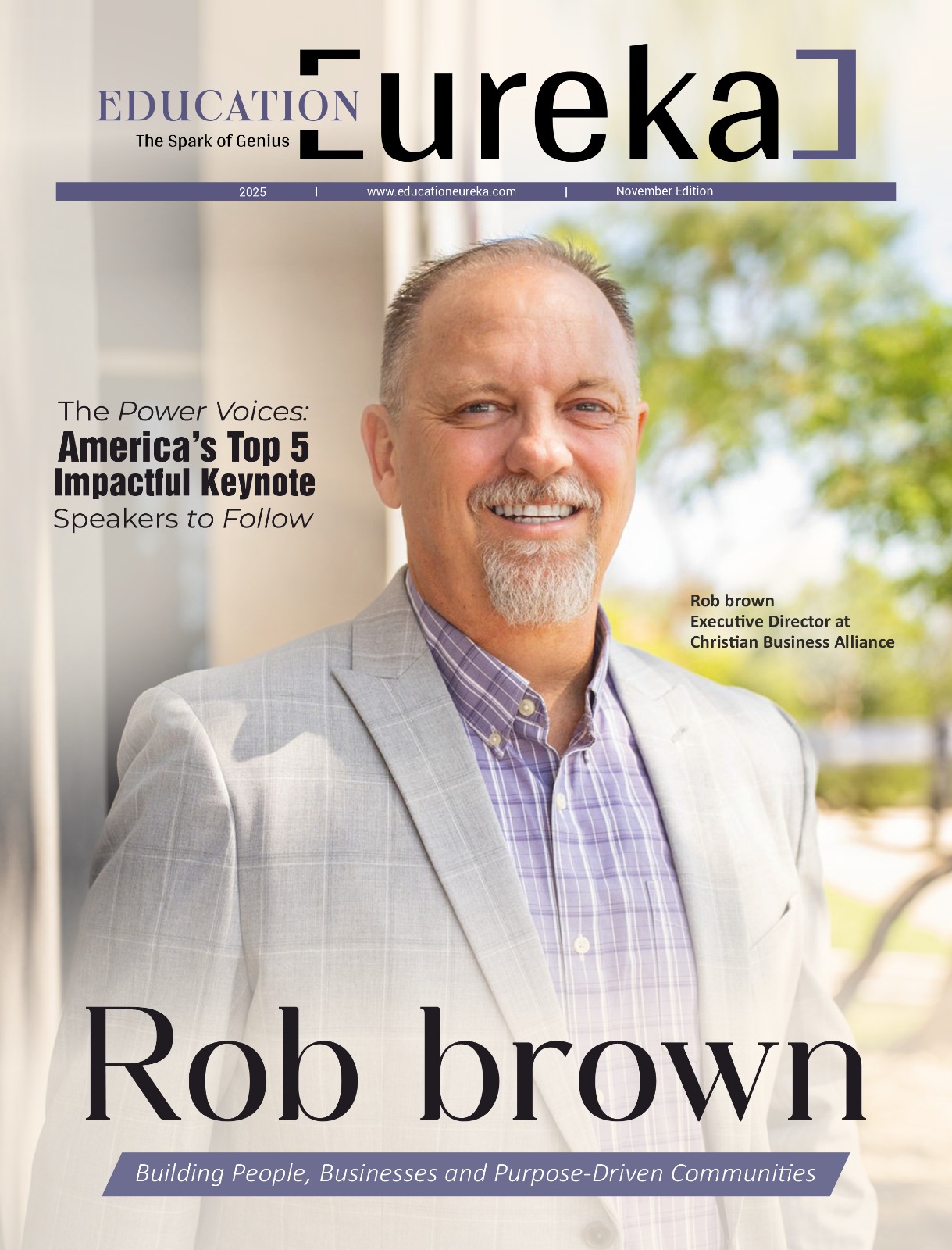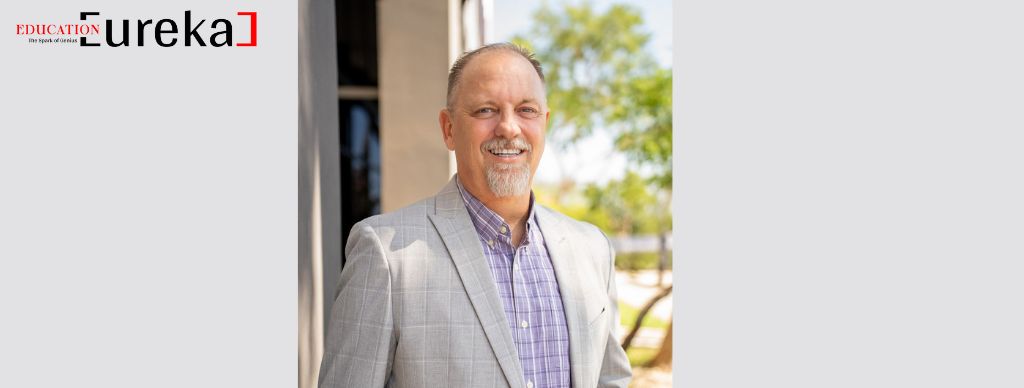
Behind every successful manufacturing transformation lies a vision that goes beyond numbers and efficiency—one that embraces the human side of operations while driving continuous improvement. By blending strategic innovation with a focus on ESG principles, safety and ergonomics, the field of industrial operations has seen significant advancements that have reshaped how factories operate. This approach has led to the creation of transformative models that drive productivity while ensuring a sustainable and healthy work environment.
This visionary approach to manufacturing excellence has been championed by Gabriele Caragnano, Senior Director at Kearney, who has played a pivotal role in advancing industrial operations and ergonomics.
Gabriele initially felt intimidated and reluctant to enter the industrial operations sector. He had initially pursued a master’s in finance with the intention of starting his career in the services sector. However, his first job was at Whirlpool Europe, located at the company’s headquarters in Comerio, Varese, just a few kilometres from his home, in 1992. After a year of training and supporting colleagues who were experts in industrial organisation, in a corporate operational excellence function, Gabriele had the opportunity to coordinate a transformation programme called Aurora, which involved all 13 Whirlpool Europe plants with 130 labour productivity improvement projects in 5 years. The typical Aurora project involved training of work analysis experts and team leaders and immediate application on very large model areas (typically involving 60-80 direct and indirect production operators), introducing the Japanese-derived work method redesign process MDC (Method Design Concept) and the work analysis technique MTM (Methods-Time Measurement). An extraordinary adventure for Gabriele, which allowed him to come into contact with the world’s best lean manufacturing experts and to get in touch with the trade union ecosystem of the main European countries. This experience ignited his passion for manufacturing, which would shape the rest of his career.
In 1997, Gabriele left Whirlpool to establish Apex Consulting, a consulting firm that became part of the German manufacturing operations consulting group Deutsche MTM Gesellschaft (DMTMG). He also founded the MTM Italia Association in 1998 together with founding members FIAT, FIAT Isvor, Whirlpool Europe, BTicino and Rutil, which evolved into the Ergo-MTM Italia Foundation in 2012. Located in Varese, near the Swiss border, the foundation became a hub for industrial engineering and lean manufacturing. At Apex Consulting, Gabriele built a talented team of young engineers, instilling in them his passion for factory operations. Many of these engineers, still with him or in senior roles at top industrial consulting companies, continue to refer to him as “Boss.”
In 2008, Gabriele sold his company to the French-Italian group Solving Efeso, bringing his team into a larger network of industrial consultants. In 2011, he received an invitation from PwC Italy to join as an Advisory Partner. His mandate was to build the operations practice for industrial sectors, where he led manufacturing transformation programs for Italy’s most significant global industrial groups. Gabriele applied the ‘BellaFactory‘ concept, which focuses on creating efficient, safe, and ergonomic factories with a collaborative climate inspired by continuous improvement and innovation.
In February 2024, Gabriele accepted an offer from Kearney Italia to join their team, seeking a return to a more human-scale working environment. Kearney’s appreciation of his experience and professionalism, as well as their total agreement on the inspiring ethical principles of Fondazione Ergo, have been instrumental in their marriage, which promises to be one of high potential.
The Campus SMARTT VAlley initiative is a visionary step towards developing advanced manufacturing ecosystems, spearheaded by Gabriele Caragnano and Fondazione Ergo. Established in 2012, Fondazione Ergo was originally set up as a neutral marketplace for collaboration among industry, trade unions, and academia. Its mission is to define common terminology, establish objectives, and develop operational models for effective factory collaboration. Since its founding (and even earlier as the MTM Italia Association in 1998), the Foundation has been dedicated to offering certified training and qualification courses for experts in ergonomic design and the measurement of manual work processes. To date, it has trained around 600 trade union representatives from major unions and over 1,000 professionals in MTM (Methods-Time Measurement) work analysis and EAWS (Ergonomic Assessment Worksheet) ergonomic analysis. The Foundation has also engaged in research and supported the implementation of new software to manage Engineered Labour Standards (ELS) work cycles for some of Italy’s largest industrial groups.
In March 2024, Fondazione Ergo inaugurated SMARTT VAlley, Space for Manufacturing, Academy, Research and Technology Transfer, investing all its financial resources and counting on the partnership with PwC Italia’s Digital & Innovation team, to reverse a trend of deindustrialisation that had been underway for a few years.
SMARTT VAlley is the latest and most ambitious project of Fondazione Ergo. This new 800 m² centre, located in the province of Varese, serves as a hub for training, innovation, and technology transfer. SMARTT VAlley is home to an expanding Manufacturing Academy, which now offers a range of professional master’s degrees for manufacturing engineers, time and method analysts, ergonomics experts, production team leaders, and logistics engineers (a professional master’s degree for industrial sustainability experts will also be available soon). In addition to academic offerings, SMARTT VAlley provides traditional consulting services for productivity improvement and innovative services for the development of innovation strategies and open innovation. The initiative is supported by representatives from some of the largest industrial groups globally, including Iveco, Marelli, Pirelli, ContiTech, Brembo, Tecniplast, Beko Whirlpool, Haier Europe, Elux Professional, Leonardo, and BDR Thermea Group. The Board of Experts consists of top specialists from diverse fields, including innovation, sustainability, work organisation, personnel management, trade unions, occupational medicine, and academia. Through its multidisciplinary approach, SMARTT VAlley is making a significant impact by driving innovation, developing skilled professionals, and shaping the future of manufacturing excellence.
Thanks to a major grant from the Lombardy Region and the Cariplo Foundation, Fondazione Ergo, in cooperation with Kearney, will further expand the range of services offered and the surface area of SMARTT VAlley (from 800 square metres to 5,500 square metres), opening an important centre for innovation and training, thus creating a true SMARTT VAlley Campus. Gabriele is particularly enthusiastic about leading the construction of a Kearney space of 250 square metres within the SMARTT VAllley Campus, which will host two Kearney strategic assets: the Digital Model Factory (DMF), based on BellaFactory principles, where more than 50 digital solutions integrated in a real assembly line will be developed; and a PERLab (Product Excellence Renewal Laboratory) area, to conduct product innovation projects with objectives consistent with Industry 5.0 logics. The centre will become a benchmark for manufacturing excellence for Kearney in the entire EMEA region and will be the operational base for a team of experienced manufacturing consultants to support European projects. Half of the Campus will comprise a Mechatronics Training School (ITS – Istituto Tecnico Superiore – in partnership with the ITS Lombardy Mechatronics Academy) that will provide local factories with young people eager to enter the world of industry, trained in the most relevant technology and management subjects. In line with the strategic priorities for the country’s economic development and in accordance with the indications of regional planning, the mission of the ITS Lombardy Mechatronics Academy is to promote the dissemination of technical and scientific culture and to support measures favouring economic development and active employment policies. The Foundation pursues these objectives mainly through the training of post-secondary level technicians. By responding in a targeted manner to requests from the public and private labour market in the relevant technological area. By promoting and supporting integration between the education, training and labour systems, ensuring synergy between these key areas.
The second half of the campus will be dedicated to the development of an Industrial Innovation Space (IIS). The IIS will offer companies a dedicated consulting service, including a physical space and necessary equipment. It will provide highly specialised expertise for the support and management of strategy, product and process innovation projects. It will also offer confidential management of rapid prototyping and pre-series activities of new products. The Campus SMARTT VAlley is a groundbreaking initiative designed to empower small and medium-sized enterprises (PMI) with the tools, resources, and ecosystem they need to thrive in an increasingly competitive and innovation-driven market. Located in the heart of Varese’s industrial landscape, the Campus offers a unique blend of professional services, physical and intellectual instruments, and tailored programs to help companies develop robust business strategies.
The contamination among projects, the presence of an Academy for industry, the Kearney space containing the DMF and PERLab, and a broad ecosystem of specialists, start-ups and research centres will make the SMART VAlley Campus a unique place in the whole of Europe. This initiative is a key part of Gabriele Caragnano’s broader vision for the future of industrial operations and innovation.
“I am deeply inspired by Olivetti’s vision of industry as a means to enrich not only economies but lives.” – Gabriele Caragnano
Gabriele has been married to his wife, Laura, for 32 years. Together, they have built a loving family that includes their two natural children, Martina and Tommaso, as well as two foster children, Samuele and Lisa. Their home is further enriched by the joyful presence of three fantastic dogs.
Gabriele is deeply passionate about sports, particularly tennis, and has been a lifelong supporter of AC Milan. He also holds a profound admiration for the Adriano Olivetti model manufacturing factory, which he regards as a beacon of industrial excellence. This iconic approach to manufacturing resonates with Gabriele for its commitment not only to productivity but also to enhancing the quality of life for workers and fostering social well-being.
Gabriele’s most overwhelming professional experience occurred with the FCA group (Fiat Chrysler Automobiles) in 2004. The transformation began with the arrival of German manager Stefan Ketter, a former executive at BMW AG, Audi AG, and the Volkswagen Group, who introduced a fresh approach to manufacturing management, free from the constraints and habits that had previously held the company back. Ketter’s leadership aimed to resolve longstanding labor conflicts by discarding old labor contracts and fostering a more collaborative environment.
Recognizing Gabriele’s expertise in work organization and ergonomics, Ketter hired his consulting firm, Apex Consulting, to support the transformation. As part of the initiative, FCA became a reference member of the MTM Italia Association, with Luigi Galante, the industrial director of Maserati and Alfa Romeo, taking on the presidency. Under the leadership of Dr. Sergio Marchionne, the program gained full support from management, workers, and union representatives.
The team piloted the MTM-UAS work analysis system at the Mirafiori plant on the Musa, Punto, and Idea assembly lines, using this project as a lab to test and develop a new ergonomic analysis method, the Ergonomic Assessment Worksheet (EAWS), in collaboration with Professor Karlheinz Schaub and his team at the Technical University of Darmstadt. Together, they developed the Ergo-MTM integrated ergonomic work design model, which was implemented on the new Alfa Romeo MiTo assembly line at the Turin Mirafiori plant.
The success of this project marked a pivotal moment in industrial relations with the trade unions, who had traditionally been resistant to change. A technical commission was set up, allowing union representatives to participate in the rollout of the new Ergo-UAS work organization model, which was initially trialed at the Mirafiori plant and later scaled up at the Pomigliano plant in Naples. The model’s success at Pomigliano set the foundation for the transformation of all FCA plants, establishing a model of efficiency and safety that inspired the implementation of the World Class Manufacturing (WCM) continuous improvement operating model across the company.
The success of the Ergo-UAS model was so impactful that it became the standard for all Exor group companies in Italy, part of the former FCA portion of the Stellantis group, and continues to guide operations within the company today.
“Good governance is the bedrock of sustainability. It ensures that every decision aligns with the best interests of all stakeholders—employees, investors, customers, and the communities we serve.” – Gabriele Caragnano
Gabriele, a global Subject Matter Expert in productivity improvement and ESG principles, envisions a transformative future for industrial operations, driven by the ambitious sustainability goals outlined in the European Green Deal.
The Green Deal’s targets—reducing net greenhouse gas emissions by 55% by 2030 (compared to 1990 levels) and achieving climate neutrality by 2050—demand deep, structural innovation across industries. These goals cannot be met with surface-level changes like transitioning to electric vehicles or optimizing energy use. Instead, they require:
🔧 Revolutionizing product structures
🏭 Reinventing production process technologies
⚡ Transitioning to sustainable energy sources
Campus SMARTT VAlley is rising to this challenge by equipping its clients with the tools and strategies to align with these transformative goals. The Campus will support companies in driving structural innovations in products and technologies to meet Green Deal objectives and calculating and managing carbon footprints analytically across the entire value chain with a dedicated platform.
This commitment to sustainable innovation ensures that businesses not only meet regulatory requirements but also gain a competitive edge in a world where ESG principles are becoming critical to long-term success.
In terms of social sustainability, Gabriele emphasizes the importance of treating people and communities fairly and responsibly. For industrial operations to thrive in the long run, the well-being of employees is paramount. This includes promoting physical and mental health through flexible working conditions, work-life balance, and psychological support programs, as well as ensuring fair and competitive wages, benefits, and professional development opportunities. Additionally, fostering a culture of continuous training will help improve skills and job satisfaction.
On the governance side of ESG, Gabriele stresses the need for organizations to be managed in a responsible, transparent, and ethical manner. Good governance is the foundation that ensures business decisions align with the best interests of all stakeholders—investors, employees, customers, and communities. Effective governance should also focus on managing risks, including those related to environmental, social, and technological factors.
Ultimately, Gabriele envisions that ESG will drive a relentless pursuit of innovation, which will become a core element of a new long-term strategic business plan to meet sustainability goals. Innovation and strategy must go hand in hand, with innovation seen as the key to improving both sustainability and competitiveness in the near future.
Ergonomics and workplace design play a vital role in enhancing operational efficiency, as they directly impact how effectively and safely tasks are performed. Gabriele explains that there are two primary factors at play: the design of the work process and its execution. The design of the process, much like the blueprint of a play, sets the framework for success, while execution, akin to an actor’s performance, determines whether that success is realized. If either aspect is lacking, the result will fall short.
The Ergo-MTM engineering methodology addresses both factors. It focuses on creating effective and ergonomic work processes (method) and determining standard working times. By analyzing manual tasks through the MTM (Methods-Time Measurement) system, an analyst breaks down the movements involved, such as direction, grip, force, and object weight. The TiCon app, developed by the MTM network, is then used to group these movements into steps, assign them to workstations, and analyze them for efficiency. The goal is to calculate the saturation levels in relation to the desired takt time—how much work needs to be done per unit of time.
The integration of the Ergo-MTM model introduces an essential ergonomic factor. The model automatically adjusts the MTM base times by adding ergonomic increments based on biomechanical load levels, calculated using the EAWS (Ergonomic Assessment Worksheet) algorithm. If a work cycle exceeds the safety thresholds set by ISO standards, the model compensates by adding extra time to allow workers to recover or slow the pace. This safeguard ensures the physical health of workers, which in turn supports sustained productivity.
According to Gabriele, the Ergo-MTM model significantly impacts operational efficiency in two ways. First, it eliminates non-value-added activities and prevents overloading the production line, making the work process more effective. Second, it establishes reliable, long-term standards for measuring team efficiency. Efficiency is tracked daily by comparing the actual time taken to produce units with the standard time. The goal is for production teams to achieve 100% efficiency by the end of the shift, with any deviations prompting a review and improvement of methods.
In his extensive experience with change management and continuous improvement, Gabriele emphasizes the importance of aligning all stakeholders and organizational levels when managing change, particularly in areas like work organization, metrics, and ergonomics. He explains that getting everyone on the same page regarding the objectives and timelines is key to successful transformation.
When it comes to transforming a factory, Gabriele stresses the critical need for investment in training and awareness-raising for all stakeholders. This includes educating employees at every level about the fundamental concepts of work analysis and their associated taxonomies. He also highlights the importance of a balanced training program that combines both technical and soft skills, particularly for middle management.
According to Gabriele, the success of any transformation initiative hinges on a robust change management program. Without it, the likelihood of failure increases significantly. This approach ensures that everyone involved is not only prepared for the changes but also equipped to manage and sustain them effectively.
Gabriele acknowledges the significance of ISO and CEN standards in the management and minimisation of risks associated with biomechanical overload, particularly in those Member States that adopt them. As the head of the UNI Anthropometry and Biomechanics working group in Italy and a member of the international counterpart ISO and CEN working groups, he also pinpoints two primary challenges hindering the advancement of these standards.
The first challenge is the insufficient involvement of industry experts in the national and international working groups responsible for developing standards, which could result in the adoption of analysis systems that are not suitable for industrial applications.
The second challenge relates to the governance and decision-making processes within these groups, which could be improved to ensure that projects are not influenced by private interests or narrow perspectives.
Despite these challenges, Gabriele sees significant opportunities to enhance the quality and reliability of ergonomics standards. He believes these opportunities are tied to the increasing adoption of sustainability policies and the vision proposed by Industry 5.0. For ergonomics standards to be effective, especially in the early stages of product and process development, it is crucial to refer to clear and applicable limits. This can be achieved by integrating predictive and simulation models, which would help ensure better-designed work environments that align with sustainability and ergonomics principles.
“My mission is to mentor a new generation of professionals who can blend technical expertise with empathy, ensuring that manufacturing evolves responsibly and sustainably.” – Gabriele Caragnano
Gabriele believes that the combination of digital technologies, driven by Industry 4.0, and sustainability, as envisioned by Industry 5.0, will be a major force in redefining manufacturing excellence in the coming decade. The integration of these technologies will be essential as companies plan and implement their sustainability initiatives, particularly in the context of ESG goals.
He also highlights a critical demographic trend: the declining number of young people entering the manufacturing industry in the next five years. Gabriele stresses the importance of increasing the training and recruitment of younger generations to ensure that the industry remains sustainable and innovative in the future. Addressing this challenge will be key to maintaining a skilled workforce and adapting to the evolving demands of both technology and sustainability.
Gabriele emphasizes that mentoring teams to embrace innovation while maintaining operational excellence requires balancing creativity with efficiency. He suggests fostering a culture of continuous learning, which can be achieved by encouraging team members to take relevant courses, certifications, or participate in innovation discussions. It’s also important to reward creativity, even if the ideas don’t always succeed, and to provide access to training programs or seminars that focus on both innovation and operational methodologies. This ensures that the team remains agile and able to integrate innovation without compromising on efficiency and quality.
“The future of industrial operations lies in our ability to align sustainability with innovation. ESG isn’t a trend—it’s the foundation for creating long-term value in the manufacturing world.” – Gabriele Caragnano
For emerging leaders in industrial engineering and operations, Gabriele advises building a unique blend of technical expertise, strategic thinking, and soft skills. Mastering core technical and operational fundamentals is essential, but so is polishing soft skills, embracing innovation as an ongoing journey, and developing strategic leadership capabilities. These elements are key to driving innovation on a global scale while remaining effective and competitive in the industry.
Discover more insightful articles on education trends, exclusive interviews, in-depth magazines, and the latest educational news—explore now on the Education Eureka website.






Welcome to the future of digital storytelling, where creativity meets innovation. We’re not just a magazine platform; we’re a team of passionate visionaries committed to transforming how stories are shared, celebrated, and experienced in the digital age. Join us as we inspire, inform, and redefine the world of digital magazines.
© Copyright 2025 | educationeureka | All Rights Reserved.